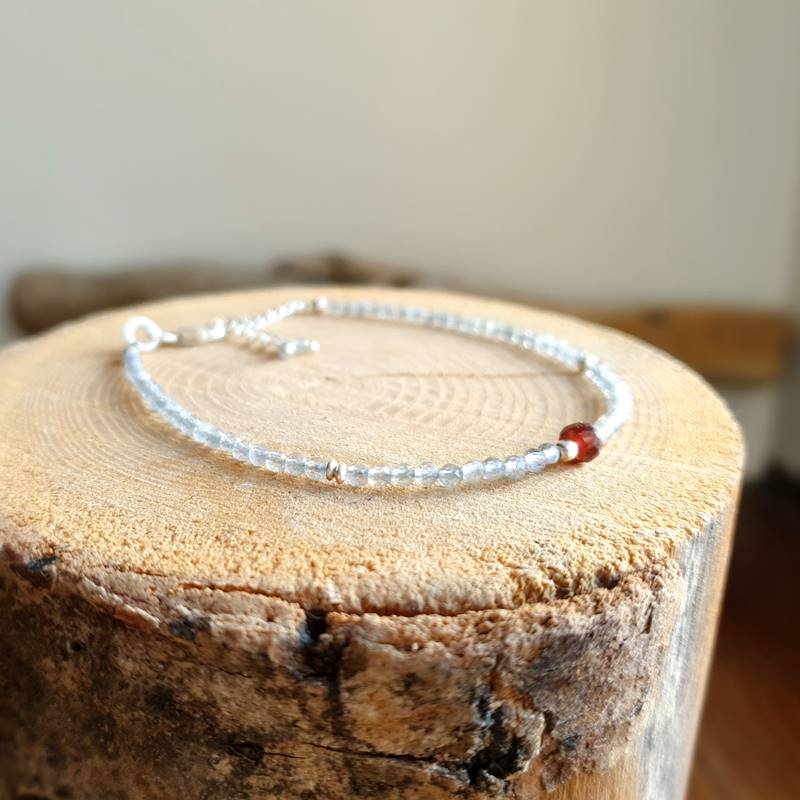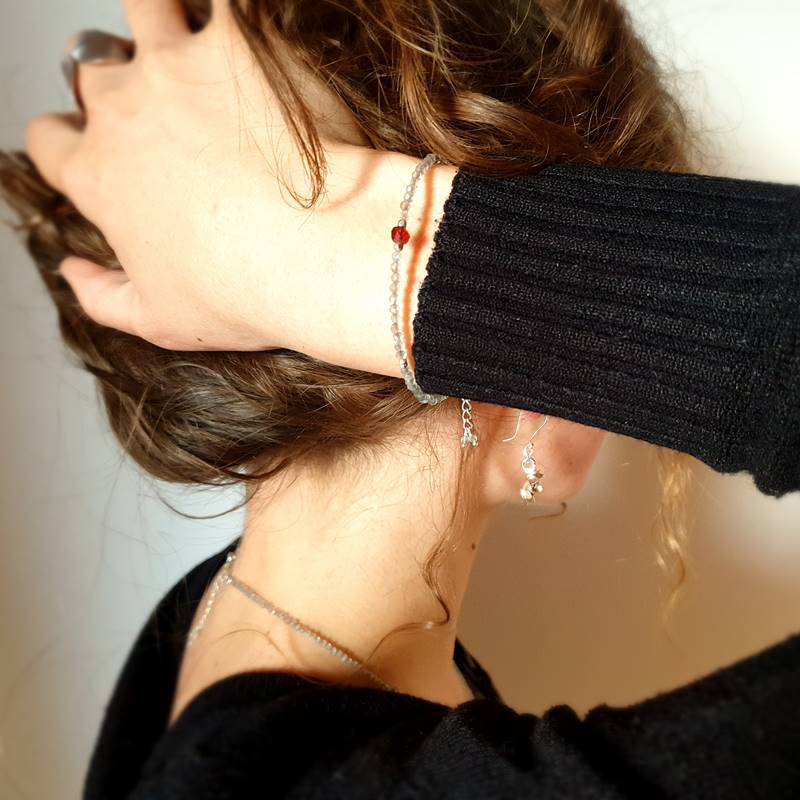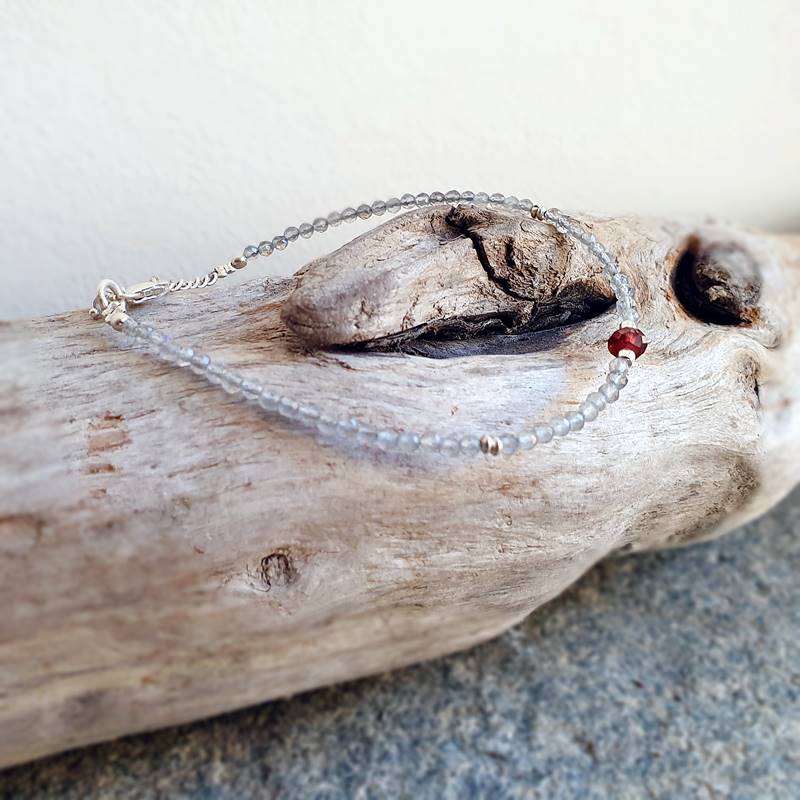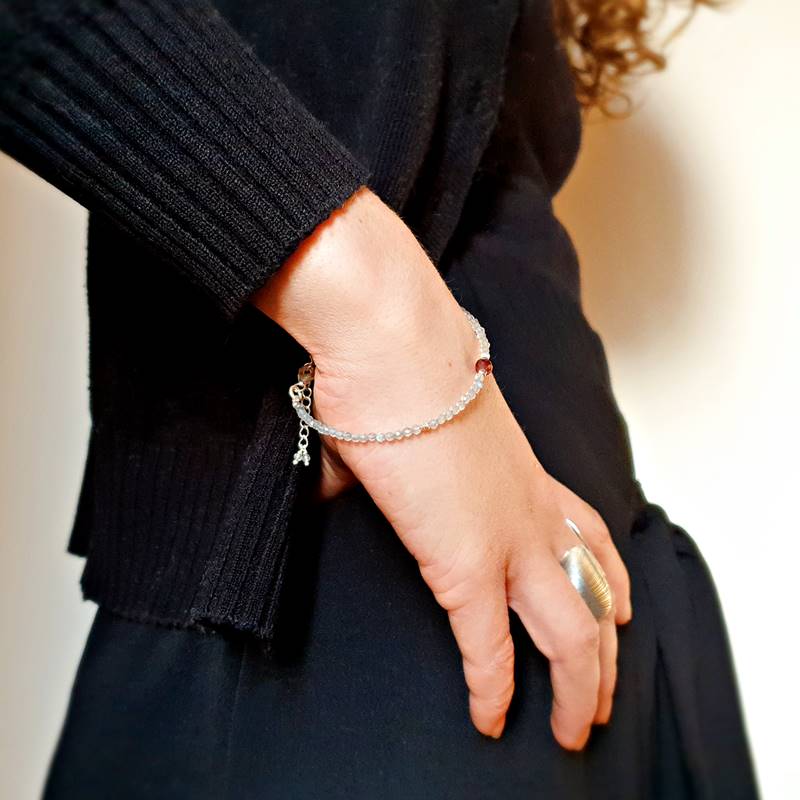Description
Fine silver faceted labradorite bracelet
The fine silver faceted labradorite bracelet is a jewel full of finesse and yet full of strength. Labradorite is the stone of protection par excellence and a lot of energy emerges from this necklace. The small faceted garnet stone and the tiny silver balls add even more delicacy to this model. Adjustable, this bracelet is suitable for fine to medium wrists, thanks to its extension chain.
The properties of labradorite
Labradorite is a semi-precious gray-black stone with intense blue highlights. Its name comes from the area in which it was discovered, Labrador, in northern Canada. The main labradorite deposits are located in Canada, Mexico, Russia, Madagascar, and Ukraine.
In lithotherapy labradorite is the stone of protection par excellence, forming a barrier against mental pollution. It absorbs negative energies to protect the wearer. Labradorite is the Yin stone for its opening and Yang for its radiance. Labradorite is a stone that brings balance, helps to overcome stress and promotes intellect, inspiration and intuition. In terms of health labradorite is used to balance the disorders related to the digestive system, as well as hormonal and menstrual disorders. It is also effective for stimulating the muscular system and the blood circulation.
The properties of garnet
Le grenat est une superbe pierre semi-précieuse, aux couleurs et aux profondeurs innombrables. Le grenat va du rouge profond au rouge-orangé. Plus la pierre est transparente, plus elle a de valeur. Les principaux pays extracteurs de grenats sont à ce jour l’Inde, la Tanzanie, et Madagascar. On trouve d’autres gisements en Russie, au Mali, au Canada, au Brésil… Le terme « grenat » vient du latin « malum granatum », fruit à grains, qui désignait la grenade. En effet, les grains de ce fuit à la couleur chatoyante rappellent





